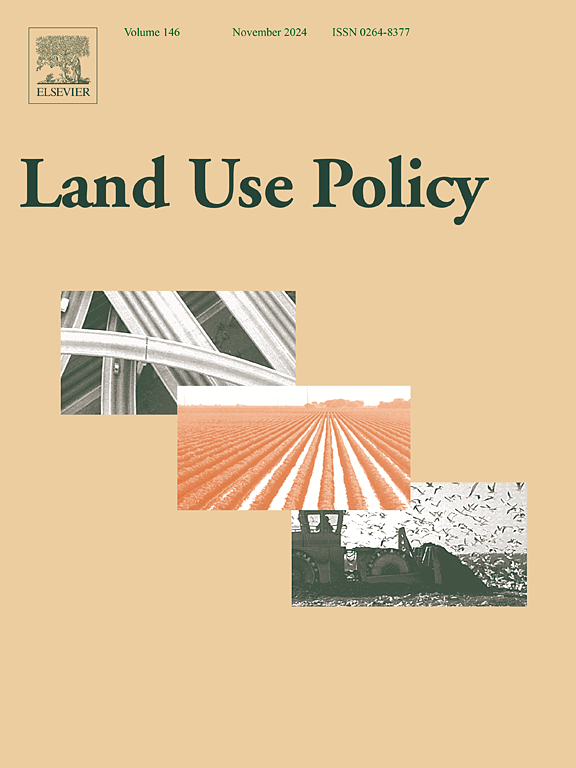The social-ecological benefits of grain for green program based on coupled coordination network: Taking the China's Loess Plateau as an example
Yibin, Wang , Fei, Li , Jian, Wang , Cao, Hongyu , Li, Mengfei
2024-08-01 null null 143(卷), null(期), (null页)
The Grain for Green Program (GFGP) is the world's largest payment for ecosystem services (PES). In the past 20 years, the Chinese government has implemented three stages of GFGP, which have profoundly affected the socialecological benefits (SEB) of China's Loess Plateau (LP), one of the regions with the most severe soil erosion and the most fragile ecological environment in the world. Therefore, we explored the changes and coupling coordination relationships of LP's SEB in the past three stages of GFGP, and examined the spatial correlation network relationships between various units and their roles of GFGP, which was particularly important for the rationality and implementation direction of LP's GFGP in the future. We found that in different GFGP stages, changes in LP's SEB showed stage differences and spatiotemporal differences. The comprehensive social benefits (CSB) changed slowly (1.342 dropped to 1.232), and there was an obvious northwest-southeast regional division in space. The changes in comprehensive ecological benefits (CEB) fluctuated more obviously (1.481, 1.638, 0.597). After experiencing significant improvements of CEB in two stages, it entered a bottleneck period in the third stage. For a long time, the LP's SEB have been in a state of coupling coordination, but the coupling coordination degree dropped to 0.493 in the third stage. With climate change, the continuous increase in potential grain yield has led to increasing losses in CSB. It was difficult to promote further coordination of LP's SEB by accelerating the improvement of CEB. The coupling coordination degree has gradually moved from overall coupling coordination to mild imbalance. At the same time, the overall density of the SEB coupling coordination space network correlation was 0.218, which has shown an obvious network structure, and formed four major sectors: main beneficiary sector, broker sector, net overflow sector, and bidirectional overflow sector in each stage of GFGP. The role of each county has undergone regional changes in the entire GFGP, and there were recurring power transmission mechanisms and complex network formation factors. Based on this, we proposed to promote the coupling coordination and positive network transmission of SEB in the next stage of LP's GFGP through lowcarbonization of agricultural production, further improvement of the compensation mechanism, and fusion of power transmission mechanism and network formation factors.
相关推荐
- Agricultural land system transition based on resilience and vitality: A case study on the Loess Plateau (Yulin, China) [2024-08-01]
- Grain Production Space Reconstruction and Its Influencing Factors in the Loess Plateau [2024-08-01]
- Soil bacterial approach to assessing afforestation in the desertfied Northern China [2024-08-01]



